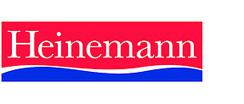Science in Process
Science in Process from Heinemann, was planned in 1987 as a two-year course for students aged 11 to 13, with a specific focus on the processes of science – how to work scientifically – rather than on a body of content. It aimed to enable students to become scientific, and to extend their perceptions of science. There is an emphasis on:
*process-skills (observing, inferring, raising questions, investigating, and so on)
*developing personal attributes (curiosity, self criticism, and so on)
*mixed-ability group work
*language (talking, listening, reading, writing)
*student self- and peer-assessment, rather than teacher assessment
Background
The developers of Science in Process were influenced by various other work. The Department of Education’s 1985 ‘Science 5-16: A Statement of Policy’ said that “The essential characteristic of education in science is that it introduces pupils to the methods of science”. Also, the findings from the Assessment of Performance Unit (APU), and the Children’s Learning in Science Project (CLISP) about children’s understanding of the concepts of science, led to the view that “science should be an active process whereby learners construct and make sense of the world by constructing meaning for themselves”. The project also followed on from the publication of ‘Insight to Science’ by Inner London Education Authority (ILEA) in 1978/1979. The ‘Science in Process’ materials were developed by a team of ILEA teachers and were trialled in schools.
Structure and teaching approach
The student books (called ‘Themes’) have two different approaches whereby students either interact with information provided (Data at Second Hand (DASH)) or use practical tasks (Data Obtaining Tasks (DOT)). There is encouragement to discuss, plan, record and present throughout. There are also worksheets (‘cut outs’) related to the books, and skills sheets to develop specific practical skills.
Resources
Filter






